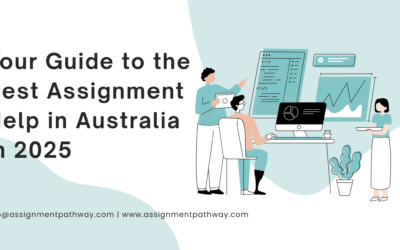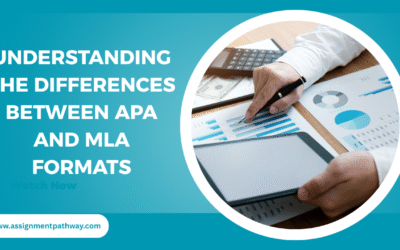Your Go-To Guide: Main Elements of a Business Reference Letter
Do you need assistance writing a business reference letter for a project you’re working on? Or maybe you’ve been asked to recommend someone and want to be sure your letter gets noticed. You’ve come to the right place! In this guide, we’ll walk you through all the key parts of a strong business reference letter, in a way that’s easy to follow and makes your writing shine.
What is a Business Reference Letter ?
A business reference letter (also called a recommendation or reference letter) is a formal endorsement of a person or company’s qualities, especially in a professional or business context. It highlights skills, experiences, character, and how these match the opportunity at hand. Business Reference Letter assist clients or hiring managers in determining whether to trust or hire someone, these letters are very important in the business world. Think of it as your professional vote of confidence!
Why It Matters for Students & Professionals ?
- Students often need reference letters when applying for internships, part-time jobs, or business school.
- Professionals use them to support colleagues or subordinates moving to new roles or projects.
A well-written letter can open doors, whether it’s academic programs or exciting business opportunities. So, whether you’re doing it as part of an assignment help project or using it in real life, doing it right matters!
Core Elements of a Business Reference Letter
Let’s break down what you need in your letter. You can follow this structure for a clear and impactful recommendation.
- Header & Date – It should include your full name, job title, company name, and business contact information (address, phone, email), followed by the date of the letter formatted clearly at the top for professional context and clarity.
- Recipient’s Address- Your section should list the addressee’s full name (including any titles), their position, the organization’s name, and the complete business mailing address formatted clearly beneath the date to ensure your letter reaches them professionally and accurately.
- Salutation – Use a formal greeting that includes the appropriate honorific and surname such as Dear Dr. Smith: or Dear Ms. Johnson: ending with a colon. If you’re unsure of the recipient’s name or gender, opt for To Whom It May Concern: instead.
- Introduction– In the opening paragraph, briefly introduce yourself by name and position, explain how you know the applicant including the length and nature of your relationship and state your purpose clearly, such as, “I am writing to recommend [Name] for [Position/Program].”
- Body (1–2 paragraphs)- Highlight 2–3 key traits such as reliability, creativity, or leadership and back each one up with a specific example or anecdote that illustrates how the candidate demonstrated that quality (e.g. “they boosted sales by 20% during our summer project”). Conclude by explaining why those strengths make the applicant a particularly good fit for the new role or opportunity.
- Closing and Signature– Conclude your letter with a professional closing such as “Sincerely,” “Best regards,” or “Respectfully,” followed by a comma. Leave space for your handwritten signature if sending a hard copy; if emailing, include your typed name beneath the closing. Optionally, add your job title, company name, and contact information below your name to provide further context.
Tone, Formatting, and Style
- Be Formal but Friendly: Business letters use a polite tone. Be positive, professional, and keep it personal with real examples
- Use Proper Business Format- For a professional appearance, use block format with 1-inch margins on all sides. Choose a 12-point font like Arial or Times New Roman and ensure single-spacing within paragraphs with a double space between them. This layout enhances readability and maintains a clean, formal presentation.
- Keep It Concise and Honest: It’s best to have one page. Being honest fosters trust, and you don’t want to bore the reader.
Types of Business Reference Letters
- Professional Reference- For employees, interns, or coworkers. highlights abilities and performance relevant to the position.
- Academic Reference- Teachers’ essays for students applying to college programs, internships, or business schools.
- Personal/Character Reference- Written about character, helpful for non‑job applications or volunteer roles. Choose which one fits best for your assignment help or real‑life scenario.
What to Avoid
- Avoid irrelevant info: Personal traits like humour aren’t helpful unless they add value.
- No personal demographic details: Race, age, religion, you should skip those.
- No exaggeration: Stick to truthful, verifiable statements.
Sample Outline
Here’s a short outline you can fill in:
[Your Address]
[City, State, ZIP]
[Phone Number]
[Email]
[Date]
[Recipient’s Name]
[Recipient’s Title]
[Company/Organization Name]
[Address]
Dear [Recipient]:
Intro: I’m [Name], [Position] at [Org]. I’m pleased to recommend [Applicant], with whom I’ve worked as their [Mentor/Boss] for [Time].
Body Paragraph 1: [Applicant] excels in [Skill 1] and [Skill 2]. For example, they [describe situation and result].
Body Paragraph 2: They also show [Characteristic], such as [story about leadership, communication, etc.].
Closing: I strongly recommend [Applicant] for [Position/Program]. I’m happy to provide more info. Reach me at [Contact Info].
Sincerely,
[Signature]
[Printed Name]
[Title]
Tips for Students & Writers
- Start early: Give yourself time to get feedback, especially for assignment help.
- Share info: Ask your recommender for details that showcase your strengths.
- Proofread: Check grammar, formatting, and consistency.
- Tailor your letter: Customize it based on the job or program.
- Always follow instructions: E.g., address it to the right person and use exact formatting.
Why Assignment Help Matters
When struggling with structuring or formatting, assignment help services or guides (like this one!) can make a huge difference. They ensure:
- Clarity in structure and format
- Effective choice of examples
- Correct length, tone, and style
And in real-world scenarios, your letter can make or break opportunities. Being well-prepared pays off.
Final Checklist
Use this before sending your letter:
- One‑page limit
- Formal header & date
- Recipient’s full details
- Clear intro with your role
- Two body paragraphs with evidence
- Honest tone, no fluff
- Strong closing & contact details
- Proper signature line
- Polished formatting & proofreading
Summary
A powerful business reference letter is well‑structured, honest, and tailored. It starts with a clear header and greeting, includes specific examples of achievements, and wraps up with a confident recommendation. Whether you’re doing assignment help or writing a real‑life letter, following these main elements ensures your letter stands out.






